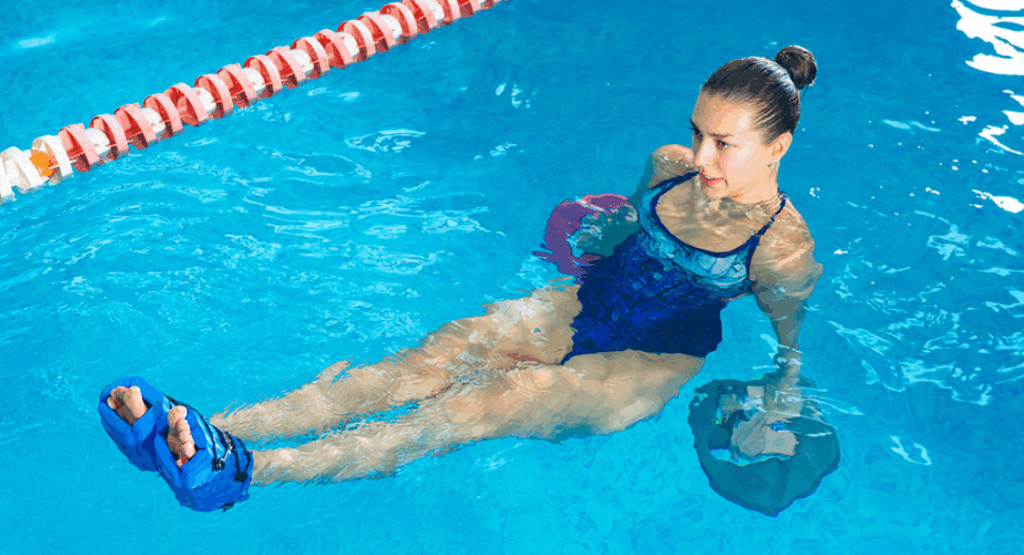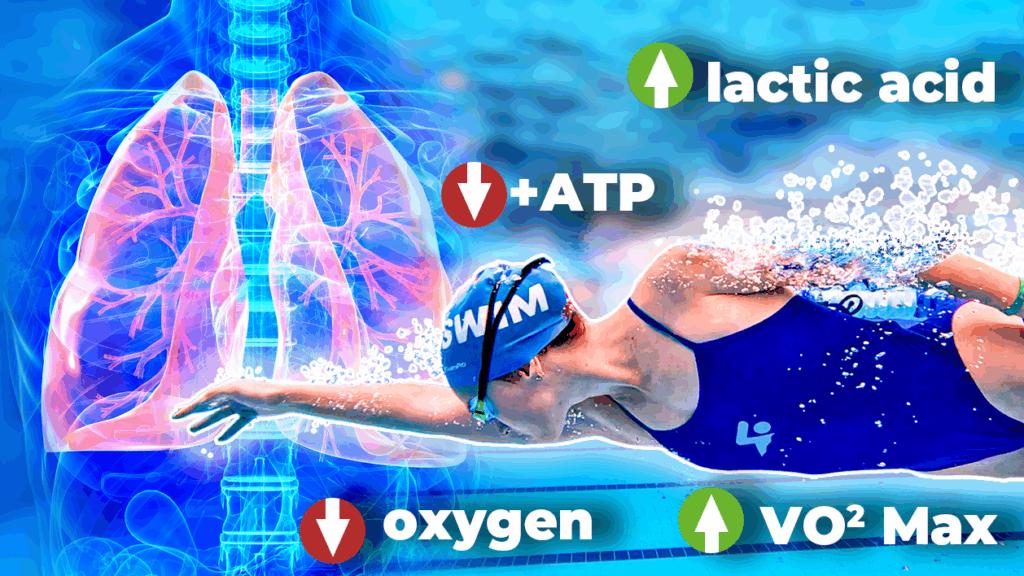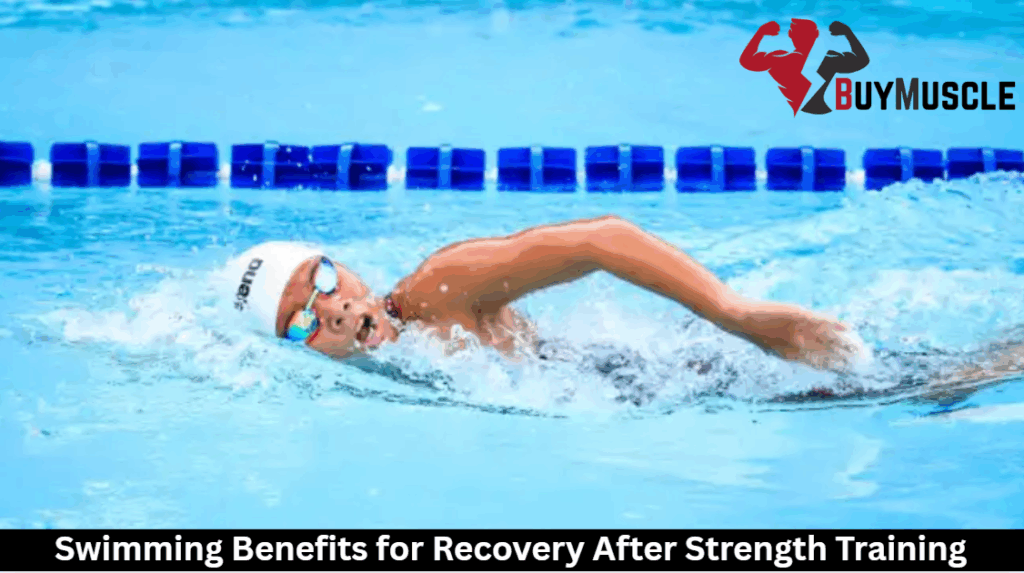Swimming offers exceptional recovery benefits after strength training. When you swim, water’s buoyancy reduces joint stress by up to 90% while its natural resistance keeps muscles engaged. The hydrostatic pressure improves circulation, accelerating lactic acid removal and reducing soreness.
A moderate 20-minute session using varied strokes helps maintain cardiovascular fitness while allowing damaged tissues to repair. Incorporating 2-3 weekly swimming sessions between lifting days can transform your recovery process and overall training results.
The Science Behind Water’s Buoyancy and Joint Relief
When you get in the water, physics starts to work in your favor right away. The buoyancy makes your body weight almost 90% less, which makes it a great place for muscles to heal without putting too much stress on them. This lack of weight takes the pressure off sore joints that have to deal with heavy lifting.
Water’s natural resistance gently pushes against everything, making muscles work without the harsh effects of moving on land. The hydrostatic pressure of water compresses your tissues at the same time, which improves blood flow and speeds up the healing of muscles.
This mix is the best way for strength athletes to recover while still being active. Your cardiovascular system stays active while your musculoskeletal system gets the rest it needs. You’re getting better while staying fit. It is a big step up from full days of rest.

How Swimming Improves Blood Circulation and Waste Removal
After completing an intense strength training session, your body’s circulatory system faces the critical task of removing metabolic waste while delivering nutrients to damaged tissues. Swimming naturally speeds up this process by improving blood flow throughout your body, which is a form of hydrotherapy.
The pressure of the water gently compresses your body and pushes blood from your arms and legs toward your heart. It reduces swelling and helps your muscles get more oxygen as they heal. This increased circulation helps flush lactic acid and other metabolic byproducts that contribute to soreness and fatigue. You’ll notice significant muscle relaxation as these waste products clear faster.
Research shows that athletes who incorporate swimming into their recovery routines experience shortened recovery time. It makes swimming an excellent strategy for maintaining consistent training intensity compared to relying solely on passive rest.

Engaging Multiple Muscle Groups on Active Recovery
Active recovery represents a fundamental shift from traditional rest methods, and swimming stands out as the perfect embodiment of this approach. When you swim, you’re engaging multiple muscle groups simultaneously without the joint stress that typically accompanies other activities.
Swimming allows you to maintain cardiovascular conditioning while giving your primary strength-training muscles time to repair. You’ll experience improved flexibility as water provides natural resistance that’s gentle enough for recovery days but sufficient to maintain muscle engagement.
Unlike complete rest, this form of active recovery keeps blood flowing to damaged tissues while enhancing endurance without overtaxing your system. The rhythmic nature of swimming movements promotes muscle relaxation and restoration without triggering additional breakdown.

Optimal Swimming Techniques for Post-Strength Training Sessions
Not all swimming techniques provide equal recovery benefits following intense strength workouts. After taxing your muscles with weights, focus on freestyle swimming at a moderate pace to enhance blood flow without overtaxing your system. It promotes recovery while maintaining cardiovascular health.
When your primary goal is improving the range of motion, backstroke becomes invaluable. It opens the chest and shoulders, which are areas often tightened during strength training, while promoting balanced muscular development.
For thorough recovery, incorporate 20-minute sessions that alternate between strokes. Begin with freestyle, shift to backstroke, and finish with breaststroke. This approach optimizes training adaptation by addressing different muscle groups while keeping intensity low enough to facilitate repair without hindering your body’s natural recovery processes.
Integrating Swimming Into Your Weekly Strength Training Program
Striking the right balance between swimming and strength training requires thoughtful programming to maximize the benefits of both activities. Consider scheduling 20-30 minute swim sessions 24-48 hours after your most intense lifting days when inflammation peaks and recovery needs are highest.
For ideal cross-training effects, alternate between high-intensity strength days and recovery swim days. You’ll find this approach maintains your performance trajectory while giving your muscles and joints valuable decompression time. Most lifters benefit from 2-3 swimming sessions weekly, but adjust based on your training volume and recovery capacity.
Remember that swimming shouldn’t replace your planned deload weeks. Instead, use it as a complementary tool that enhances your primary strength goals while providing active recovery benefits your body craves after taxing workouts.
Frequently Asked Questions
Can Swimming Help Reduce Cortisol Levels After Intense Training?
Yes, swimming can lower your cortisol levels after intense workouts. The rhythmic motion and water immersion create a relaxing effect, while the light activity helps your body shift from stress to recovery mode.
How Does Chlorine Affect Muscle Recovery and Skin Health?
Chlorine can irritate your skin and potentially slow recovery by drying out tissues. Rinse off immediately after swimming and apply moisturizer to minimize these negative effects on your muscles and skin.
Is Cold or Warm Water Better for Post-Strength Training Recovery?
Both have benefits. Warm water (85-90°F) relaxes muscles and increases circulation, while cold water (60-70°F) reduces inflammation. You’ll get ideal results alternating between temperatures or using lukewarm water (78-84°F) for general recovery.
Can Swimming Worsen Certain Types of Strength Training Injuries?
Yes, swimming can worsen certain injuries, especially shoulder strains, rotator cuff issues, or lower back injuries. You’ll want to avoid strokes that aggravate your specific injury and consult your physical therapist first.
Does Swimming Recovery Benefit Certain Muscle Groups More Than Others?
Swimming especially benefits larger muscle groups like your legs, back, and shoulders. It’s more effective for these areas due to the water’s resistance and increased blood flow during horizontal movement patterns.








